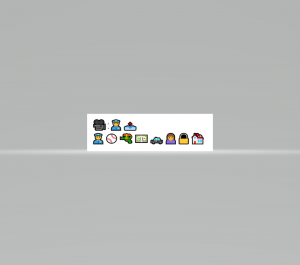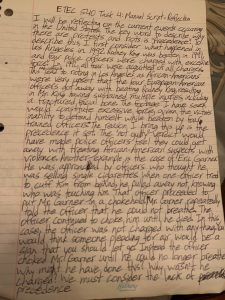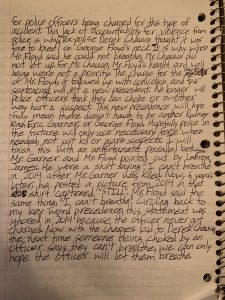Song 1: The first song I chose is “Kinds of Flowers”. This was also chosen by Tamara Vaughan. Tamara and I both chose this song because it helped to represent all of the diverse groups of people on Earth. In reflecting on another criteria it meets that Tamara mentioned but I initially did not, it includes vocals, something that was an important factor for Tamara for all her songs. I also mentioned vocals in other songs, but did not mention it for this song.
Song 2: The second song I chose is “Senegal, percussion”. This was also chosen by Alexandra Scott and Janice Roper. Alexandra, Janice, and I all chose this song due to its representation of something that other songs did not represent. For all three of us, the representation of the African continent was a reason for choosing this song. For Janice, it was the also the use of wind instruments. I did not consider what type of instruments were used so this was an interesting way to make song selections.
Song 3: The third song I chose is “El Cascabel”. This song was also chosen by all three of my group mates, Alexandra, Janice, and Tamara. Alexandra chose the song due to its representation of North America and use of the Spanish language. Janice chose this song due to its sounds and instruments. Tamara chose this song because it included vocals. I had vocals as one of my criteria that this song met, sharing that with Tamara. I did not think of needing to represent based on languages as much as location, so I did not mention a representation of Spanish as Alexandra did. As previously mentioned, I did not consider different sounds of instruments, which was a key criteria for Janice.
Song 4: The fourth song I chose is “Johnny B Goode”. This song was also chosen by all of the group members. This song met Alexandra’s criteria of global representation, as it represents North America. This song met Janice’s requirement of sounds and instruments. One reason both Tamara and I chose this song is because of its popularity and familiarity.
Song 5: The fifth song I chose is “Queen of the Night” aka “The Magic Flute”. I was the only one in my group who chose this song.
Song 6: The sixth song I chose is “Tchakrulo”. This song was also chosen by Janice and Tamara. Janice chose this song because of its primary use of vocals which was also one of the reasons why I chose this song. Tamara chose this song because of its representation which was also one of the reasons I chose this song, to represent Eastern Europe.
Song 7: The seventh song I chose is “Beethoven’s Fifth”. This song was also chosen by Alexandra and Janice. Alexandra chose this song because of its representation of Europe. Janice chose this song for its use of string instruments. I did not choose it for the same reasons as either of the other two group members, but I can see their reasons for choosing this song.
Song 8: The eighth song I chose is “Iziel je Delyo Hagdutin”. This song was also chosen by all of the group members. Alexandra chose those this song because it is a representative for Europe. Janice chose this song because of its use of wind instruments and a female vocalist. Tamara chose this song in part because of its use of vocals. I shared this reason with Tamara as vocals were a key reason I chose this song.
Song 9: The ninth song I chose is the “Solomon Islands Panpipes”. I was the only one in my group who chose this song.
Song 10: The tenth song I chose is “Jaat Kahan Ho”. This song was also chosen by all of the group members. Alexandra chose this song because it is a representative for India. Janice chose this song because of its use of strings instruments, specifically the Sitar. Tamara chose this song in part because of its use of vocals. I chose this song for its representation of India, as Alexandra did. I also chose this song for its use of vocals, as Tamara did.



